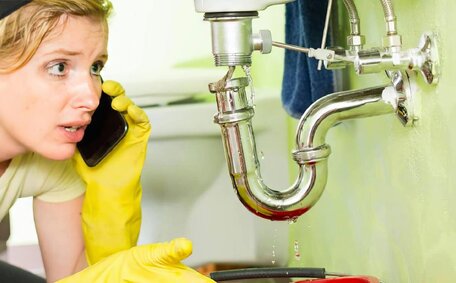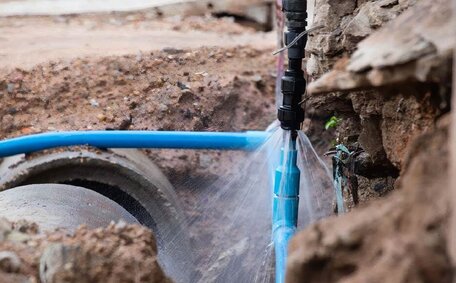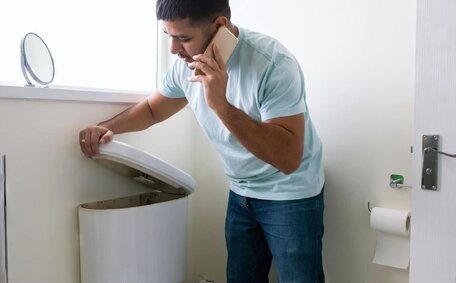Introduction to Troubleshooting Cold Water Issues
Losing hot water can significantly disrupt your daily routine and comfort at home. A comprehensive troubleshooting checklist assists in correctly diagnosing problems to restore your home’s hot water.
Promptly identifying and addressing water heater problems is key to reinstating your home’s normalcy.
This article serves as a comprehensive guide for homeowners to troubleshoot issues with their hot water supply.
It covers immediate actions to take, potential reasons for hot water failure in both electric and gas systems, and preventative maintenance steps. A grasp of the fundamentals of your hot water system enables you to troubleshoot minor issues or discern when professional help is needed.
Immediate Actions to Take When You Have No Hot Water
If you discover your hot water is no longer working, there are several practical steps to take immediately:
- Check whether the hot water system is receiving power - ensure the power switch and circuit breaker are on
- For gas systems, make sure your gas valve is open to the water heater
- Check that the pilot light is lit on gas units; re-light it if needed
- Ensure all taps are fully closed, then briefly test the hot and cold faucets to evaluate water flow and temperature.
- Examine the pressure relief valve and pipes for signs of compromised water pressure or leaking
- If all checks are conducted safely following protocols and reveal no issues, monitor hot water flow for 20-30 minutes
Should the lack of hot water persist following this checklist, the issue could stem from a more complex problem. The following sections explore the many potential reasons for hot water failure.
Common Causes and Fixes for Loss of Hot Water
Thermostats may also malfunction, failing to signal when more heat is needed.
In electric water heaters, the heating elements often fail over time and stop heating properly.
Check the water heater’s temperature setting; a thermostat set around 49°C is recommended for energy efficiency and comfort. If the thermostat looks accurate but you have no hot water, assess the following:
- Electric heaters - Turn off power and inspect heating elements for buildup or cracks. Replace damaged elements.
- Gas heaters - Check that pilot lights are lit and burners are clean. Relight pilot lights if extinguished.
- All models - Inspect pipes and valves for leaks which could prevent proper heating. Tighten fittings as needed.
In some cases, flushing the water heater can remove sediment buildup interfering with heat transfer. Consult your owner’s manual for more information and detailed instructions. If issues persist after applying these remedies, a technical repair or replacement that a professional plumber can fix may be necessary.
Electric Water Heater Troubleshooting
Electric water heaters can develop issues with power supply, heating elements, or thermostats resulting in loss of hot water. It’s critical to disconnect power at the circuit breaker before inspecting electrical parts. Wear insulated gloves for safety.
No Hot Water Due to Power Problems
Check the electric circuit breaker or fuse powering the water heater. Flip the breaker fully off first then back on to ensure a proper reset. Replace blown fuses. If the unit now heats water, the issue was a disruption in power.
Heating Element Failure
Heating elements in electric water heaters typically warm the water swiftly, often within days post-installation. Gradually, mineral deposits may accumulate on elements, reducing their efficiency or causing them to fail. Examine both upper and lower heating elements, where heated water is usually distributed:
- Drain the tank completely so elements are fully exposed
- Check for cracks in the metal or ceramic housing
- Look for bulges or bubbles indicating interior damage
- Assess mineral buildup which reduces heat transfer
- Use a multimeter to check element continuity and resistance
Replace any damaged or worn heating elements with new ones. Be sure to get the exact replacement part recommended for your water heater model.
Defective Thermostats
If heating elements check out fine but you have no hot water, the thermostat regulating temperature may be faulty. Thermostats signal elements when to power on and off. To test if the thermostat is working properly:
- Turn up the temperature setting on the thermostat
- Check if you now have hot water after 20-30 minutes
- If not, disconnect and test thermostat continuity with a multimeter
- Replace the thermostat if defective
It’s advisable to let professionals replace a faulty thermostat, as this is an advanced task. These tests should pinpoint if your thermostat needs repair.
Gas Water Heater Troubleshooting
Gas water heaters may encounter problems with the gas supply, pilot lights, burners, or thermostats, leading to hot water loss. As gas systems involve combustion, it’s critical to exercise caution when conducting any troubleshooting.
No Gas Supply
Ensure that gas supply valves are fully open and resolve any interruptions in the gas supply before continuing with other troubleshooting steps.
If using LP gas from a tank, Check the fuel levels in your LP gas tank and contact your utility provider if the gas meter indicates no pressure.
Pilot Light Problems
Water will not reheat if the pilot light is extinguished.
Before relighting, check for issues like obstruction from dirt or spider webs around the pilot. Ensure adequate ventilation and no flammable chemicals nearby before pressing the ignitor to spark a flame. If the pilot won’t stay lit, there may be deeper issues requiring professional assistance.
Burner Inspection
Gas burners heat water in the tank. Dirt, corrosion and obstruction can all hinder burner function. Carefully clean burners showing any buildup or debris. Replace damaged burner components and address venting issues if found.
Examine the burner flame; blue indicates normal operation, while yellow, orange, or irregular flames suggest problems.
Thermostat Issues
Like electric models, gas water heater thermostats signal temperature regulation. If tank water won’t heat with no other issues found, test your thermostat:
- Turn up the temperature setting on the thermostat
- Check if you have hot water after 20-30 minutes
- If water remains cold, thermostat may be defective
Have a professional assess the thermostat and swap it out if faulty.
Preventative Maintenance for Water Heaters
Regular System Inspections
Check that all components are clean and in working order. Tighten any loose fittings or connections found.
Flushing and Descaling
Performing an annual flush can eliminate sediment from the tank that impairs heating efficiency.
To remove tank sediment, shut off power or gas, halt the water supply, attach a hose to the drain valve, and open the pressure relief valve.
Anode Rod Replacement
Anode rods attract corrosion instead of the tank. Neglecting this maintenance causes premature tank failure.
They wear out faster than other components, needing replacement every 3-5 years. Hire a professional to swap anode rods since over-torquing can damage threaded openings.
Temperature & Pressure Relief Valve
Safety valves should be tested 1-2 times per year by briefly opening to ensure proper water flow. Replace if no water releases or the valve does not close completely after testing. Improper T&P valve operation can make tanks explode under excess pressure.
Prevent Bacteria Growth
Temperature is key - keep units set above 60°C to prevent Legionella and other dangerous bacteria from growing. At this heat level, pathogens cannot thrive while risk of scalding remains low.
When to Call a Professional Plumber
While DIY troubleshooting can resolve many minor hot water issues, there are situations where it’s imperative to call a professional plumber:
Significant Leaks
Attempting to repair major leaks coming from water heater fittings, valves or pipes yourself risks making the situation drastically worse. The expertise of a licenced plumber is required to properly isolate then rectify the source of leaks.
Gas Control Valve or Burner Problems
If your gas water heater pilot light won’t stay lit or burners seem dangerously abnormal despite troubleshooting efforts, immediately contact a plumbing professional. Improper handling of gas system issues can cause explosions or carbon monoxide poisoning.
Complex Electrical Issues
Homeowners can safely execute simple power supply checks, yet extensive electrical tests or parts replacement in electric heaters must be done by qualified professionals. Engaging in electrical repairs without adequate training endangers your safety.
Instead of contending with doubt, take advantage of the expertise provided by professional plumbers. Professionals can swiftly diagnose complex hot water problems and implement solutions for a dependable home supply.
Tips to Safeguard Your Hot Water System
Insulate Hot Water Pipes
Insulating hot water pipes maintains water temperature as it moves from your water heater to faucets, saving energy and delivering hotter water. Fit foam pipe insulation around all accessible hot water pipelines to boost efficiency and convenience.
Install a Drain Pan
Metal drain pans capture any tank or fitting drips, channelling water safely away.
Confirm T&P Valve Functionality
The temperature and pressure relief (T&P) valve is a crucial water heater safety device that opens if excessive heat or pressure builds in the tank. Test the T&P valve once a year by briefly lifting or turning its lever to confirm functionality. Immediately replace malfunctioning valves to reduce the risk of a tank exploding.
Replace Anode Rods
Anode rods in hot water tanks corrode preferentially, shielding the tank from rust and corrosion. The lifespan of an anode rod varies from 2-5 years, with heavily mineralised water accelerating wear. Engage a plumber to evaluate and change your anode rod every 3 years, ensuring longevity.
Annual Inspections & Flushing
A yearly inspection by reputable plumbers ensures components are checked, sediment is flushed, and efficiency is maintained. They also check safety mechanisms and pipe integrity, advising when parts need replacement. Investing in preventative maintenance prevents emergency breakdowns.






